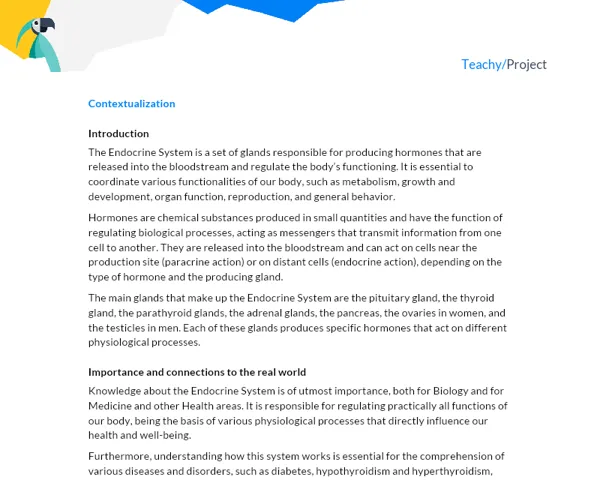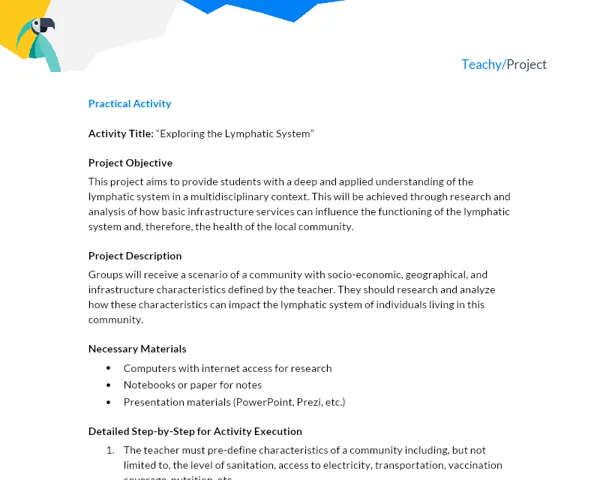Contextualization
Biology is the area of study that heredity and how genes influence the characteristics of an organism is called genetics. This science is focused on understanding how these characteristics, called traits, are passed from parents to children, explaining the similarity between parents and children, as well as the emergence of variations within a species. Strengthening these genetic principles contributes to our understanding of how life evolves and diversifies. Genetics is based on two main units of heredity: genes and chromosomes. Genes are segments of DNA that carry instructions for the development, functioning, growth and reproduction of living beings. Chromosomes are structures that store and transport genes. They exist in pairs, with one inherited from the mother and one from the father. To understand genetics, it is also important to distinguish between genotype, the individual genetic makeup, and phenotype, the observable characteristics that result from the interaction of the genotype with the environment.
Importance of Genetics
Genetics has practical applications that extend to a wide range of fields. In medicine, it is used to identify genetic diseases and develop treatments. In agriculture, it is applied to improve desirable traits in plants and animals. In criminal justice, it is used for DNA testing in criminal investigations. In addition, the study of genetics opens doors to new possibilities for treating diseases. Gene therapy, for example, is a technique that involves modifying an individual's DNA to treat diseases. CRISPR technology, a gene editing tool, allows DNA to be altered more precisely, which can revolutionize the treatment of a variety of diseases.
Practical Activity: "Genetics Game"
Activity title
"Genetics Game: An Adventure in the World of Genes and Chromosomes"
Project objective
The objective of this activity is to allow students to explore the fundamental concepts of genetics in a fun and collaborative way. Through a board game, students will have the opportunity to apply and expand their knowledge of genetics, while developing teamwork and problem-solving skills.
Detailed description of the project
Each group of 3 to 5 students will create a board game based on genetic concepts. The game should include elements involving genotype and phenotype, types of cells (haploid and diploid) and characteristics of genes and chromosomes. The groups should structure the game with questions, challenges and penalties that stimulate the review and application of theoretical aspects of genetics.
Materials required
- Cardboard or other sturdy material for the game board.
- Player place markers (can be stones, bottle caps, etc.).
- Cards or paper for questions and challenges.
- Materials to decorate the board (crayons, paint, stickers, etc.).
Step by step to carry out the activity
- Game planning
First, students should decide together the structure and rules of the game. They should discuss and define how genetic concepts will be incorporated into the game and how the questions and challenges encourage the review of these concepts. 2. Game board creation
Students should work together to create the game board. They can use cardboard or other hard material for the game board and crayons, paint, stickers, etc., for decoration. 3. Creating the questions and challenges
The groups should develop a list of questions and challenges that address the genetics concepts discussed in class. These questions and challenges will be used during the game to test the players' knowledge. 4. Genetics game
Finally, each group should play the game board they created, answering the questions and facing the challenges. This is the time for students to have fun while learning! 5. Written document
After completing the project, each group should prepare a report following the following topics:
- Introduction: Contextualize the project, the importance of genetics and the application of the concepts in the game.
- Development: Explain the methodology used to create the game, describe the execution of the project in detail and discuss the answers to the game questions.
- Conclusion: Reflect on the learnings, summarizing the main points of the project and describing the conclusions.
- Bibliography: List the sources used to create the game questions and challenges. This report should combine the practical experience of creating and executing the game with the theory studied, serving as a complete record of the pedagogical project.


